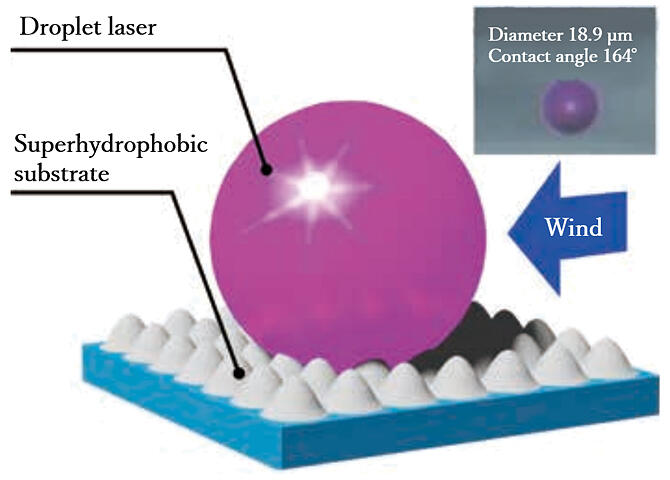Flexible devices can adjust their functions according to their deformation and have attracted considerable attention in the electrical and optical fields. However, the flexibility of these devices has certain limits. From this backdrop, liquids show promise as the ultimate flexible material. Attempts have also been made to create perfectly spherical (true sphere) droplets as small as a few micrometers (millionths of a meter) in size; such spheres are considered essential to create entire devices that generate lasers using liquid. However, it is difficult to fabricate these droplets and prevent their evaporation on substrates, and we have not been able to achieve stable droplets that can be used in the atmosphere.
Professor Yohei Yamamoto and Assistant Professor Hiroshi Yamagishi of the Faculty of Pure and Applied Sciences at the University of Tsukuba have succeeded in developing a microscopic laser light source using 100% liquid materials. Specifically, they created droplets by dropping imidazole salts (which are non-volatile ionic liquids with large surface tension) onto a substrate with a superhydrophobic surface. It was possible to create nearly perfect spherical droplets by minimizing their size and reducing their falling velocity during the dropping process, thereby increasing the contact angle. These droplets can maintain a nearly perfect spherical shape on the substrate and remain stable for over a month even in atmospheric conditions without detectable evaporation. They further investigated the functionality of these liquid droplets as a laser light source and found that the source exhibited laser oscillation at a threshold approximately equal to the most advanced organic microsphere solid-state laser, at around 1 microjoule per square centimeter.
Liquids, due to their lack of a definite shape and position, have had limited applications as optical devices. However, the stable liquid laser devices constructed using this newly developed method exhibit the inherent properties of liquids, such as deformation and external stimulus responsiveness. These results are expected to lead to the realization of new flexible optical devices.





